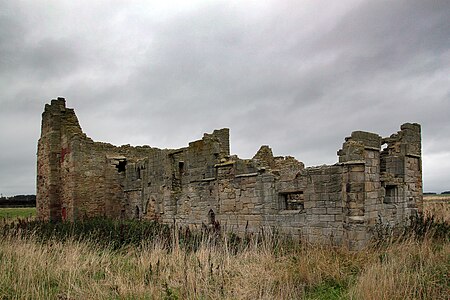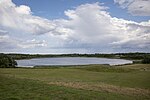Chibburn Preceptory
Monasteries in NorthumberlandNorthumberland building and structure stubsPreceptories of the Knights Hospitaller in EnglandRuined abbeys and monasteriesRuins in Northumberland ... and 1 more
United Kingdom Christian monastery stubs

Chibburn Preceptory (also known as Low Chibburn Preceptory) are the ruins of a Medieval/Post-Medieval Hospitaller preceptory near Widdrington in Northumberland, England. The preceptory was first recorded in 1313, and it was abolished in 1540 when all its lands were passed to the Crown and later the Widdrington family. Low Chibburn had several uses, ranging from a hospital to a dowager house before being razed by French invaders in 1691. The preceptory buildings have undergone repair and restoration by Northumberland County Council, and the site is now a Scheduled Ancient Monument protected by law.
Excerpt from the Wikipedia article Chibburn Preceptory (License: CC BY-SA 3.0, Authors, Images).Chibburn Preceptory
A1068,
Geographical coordinates (GPS) Address External links Nearby Places Show on map
Geographical coordinates (GPS)
| Latitude | Longitude |
|---|---|
| N 55.2623 ° | E -1.5831 ° |
Address
Chibburn Preceptory
A1068
NE61 5DZ , Widdrington Village
England, United Kingdom
Open on Google Maps








